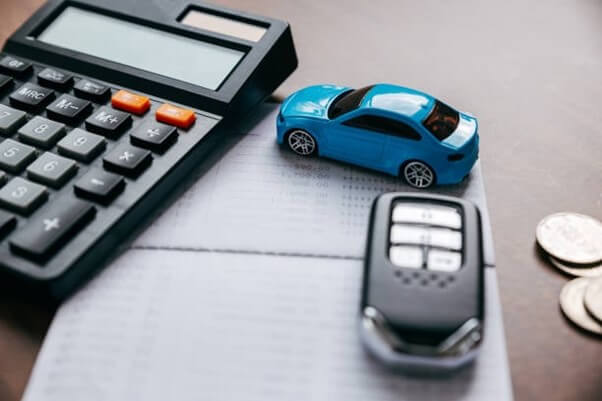When it comes to buying a car, choosing between a new and a used vehicle is often a tough decision. Both options have their pros and cons, especially when you factor in financing. One major area where new and used car purchases differ is the car loan interest rates.
Whether you’re leaning toward a brand-new model or a well-maintained second-hand vehicle, understanding the differences in interest rates can help you make a more informed financial decision. In this article, we’ll break down the key differences between car loan interest rates for new and used cars and explain how a car loan EMI calculator can be a helpful tool in your planning.
What Influences Car Loan Interest Rates?
Before diving into the comparison, let’s understand the factors that affect car loan interest rates:
- Vehicle Type (New or Used)
- Loan Amount
- Loan Tenure
- Down Payment
- Age and Condition of the Vehicle (for used cars)
- Relationship with the Lender
Lenders typically consider new cars to be lower-risk assets, while used cars are riskier due to depreciation, condition, and resale value. This directly impacts the interest rates offered.
Car Loan Interest Rates – New Cars vs. Used Cars
Let’s explore the interest rate differences in detail:
Interest Rates for New Cars:
- Lower Interest Rates:
New cars usually come with lower car loan interest rates, typically ranging from 7% to 10% depending on the lender and applicant’s profile. - Longer Tenure Options:
You may be eligible for a loan tenure of up to 7 years, which can reduce your monthly EMI. - Higher Loan-to-Value (LTV):
Lenders are more likely to finance up to 90%–100% of the car’s on-road price.
Interest Rates for Used Cars:
- Higher Interest Rates:
Due to increased risk and depreciation, car loan interest rates for used cars are generally higher, ranging from 10% to 18%. - Shorter Loan Tenure:
Loans for second-hand cars usually come with a tenure of up to 3–5 years. - Lower LTV:
Lenders may only finance 70%–85% of the car’s market value.
Why Are Interest Rates Higher for Used Cars?
There are several reasons why lenders charge higher car loan interest rates on used cars:
- Depreciation: Used vehicles depreciate faster and may not retain much value after a few years.
- Resale Risk: In case of default, lenders might face difficulty in recovering the loan amount through resale.
- Vehicle Condition: Older vehicles have higher chances of breakdown, reducing their resale value.
- Verification & Documentation: Evaluating a used car’s condition and ownership history adds to the lender’s cost and risk.
Using a Car Loan EMI Calculator for Better Planning
Whether you’re considering a new or used car, a car loan EMI calculator helps you estimate your monthly outflows based on:
- Loan amount
- Interest rate
- Loan tenure
How to Use a Car Loan EMI Calculator:
- Visit a lender’s website or financial portal.
- Input the loan amount, applicable car loan interest rate, and tenure.
- The tool will instantly display:
-
- Monthly EMI
-
- Total interest payable
-
- Total repayment amount
This allows you to compare offers and understand how higher interest rates on used car loans impact your EMIs.
- Key Differences Between New and Used Car Loans
| Feature | New Car Loan | Used Car Loan |
| Interest Rate | Lower (7–10%) | Higher (10–18%) |
| Tenure | Longer (up to 7 years) | Shorter (3–5 years) |
| Loan Amount (LTV) | Up to 100% | Up to 85% |
| EMI Amount | Lower due to better terms | Higher due to shorter tenure and higher rates |
| Eligibility | Easier to qualify | Stricter verification process |
| Processing Time | Faster | Slightly longer due to car inspection |
Tips to Get the Best Car Loan Interest Rates
Regardless of whether you choose a new or used car, here are some tips to get better rates:
- Opt for Shorter Tenure: While this increases EMI, it reduces total interest outgo.
- Negotiate with Lenders: Especially if you have an existing relationship with the bank.
- Compare Multiple Offers: Use online marketplaces or bank websites to compare rates.
- Make a Higher Down Payment: Reduces loan amount and shows financial stability.
Should You Choose a New or Used Car Loan?
Choose a New Car Loan if:
- You want lower car loan interest rates.
- You prefer longer loan tenure with manageable EMIs.
- You want to finance up to 100% of the car’s price.
Choose a Used Car Loan if:
- You are on a tight budget.
- You’ve found a well-maintained second-hand car.
- You can afford a higher EMI for a shorter term.
Your choice depends on your financial situation, long-term goals, and personal preferences. Either way, using a car loan EMI calculator will ensure you’re not caught off-guard by unexpected repayments.
Conclusion
Both new and used cars have their own appeal, but the financing terms—especially car loan interest rates—can vary significantly. New cars enjoy lower interest, longer tenure, and higher financing limits. Used cars may cost less upfront but can attract higher interest rates and stricter terms.
Before you apply for any car loan, it’s wise to use a car loan EMI calculator to assess your monthly repayment obligations and compare offers. Doing so not only saves you money but also helps you make an informed decision aligned with your financial health.
In 2025, digital tools, transparent lending, and customer-centric offers make car financing more accessible than ever. Use them wisely, and drive away with not just the car you love—but also a loan that works in your favour.








